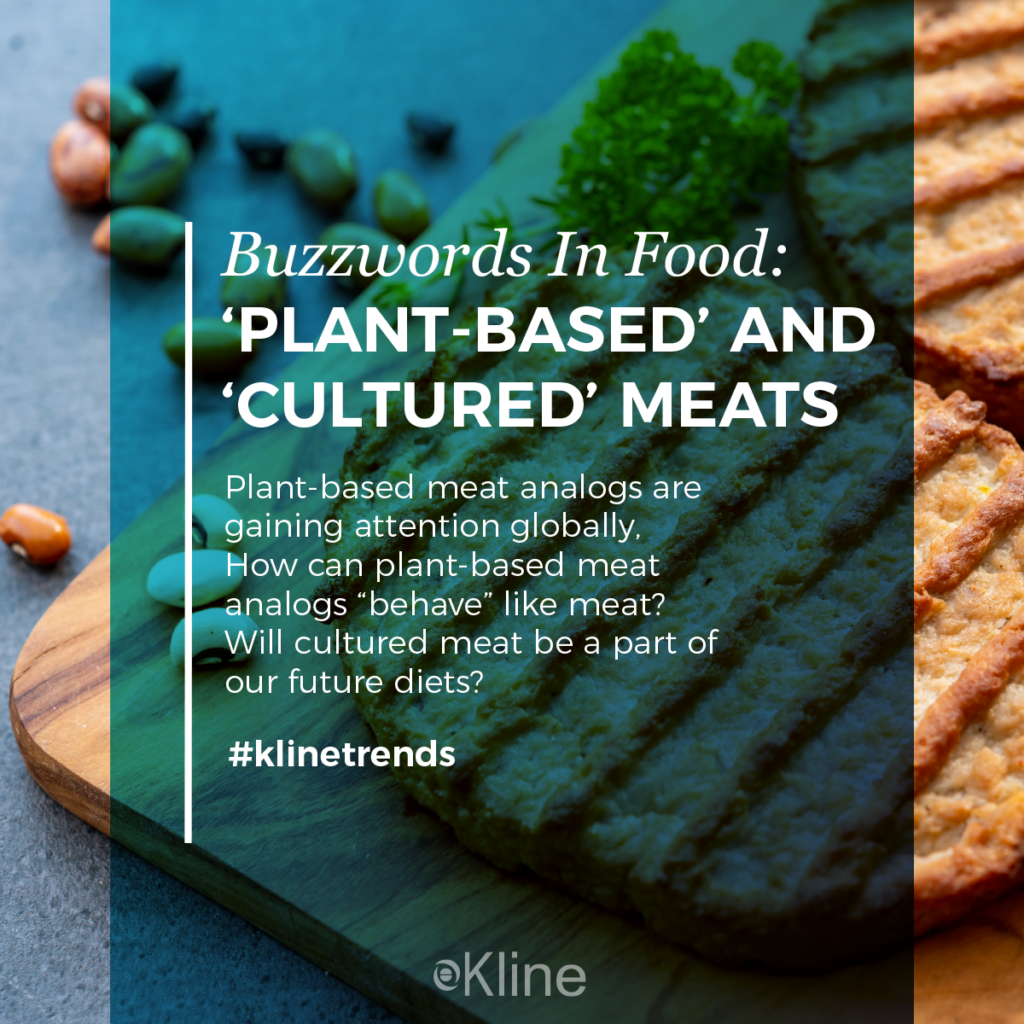[TREND 21] Buzzwords in Food: ‘Plant-Based’ and ‘Cultured’ Meats

Plant-based meat analogs are gaining attention globally, due to the rise of environmental concerns associated with livestock production and the perceived negative health impacts of red meat. The plant-based meat market is strongest in the United States. Meanwhile, significant opportunities abound in Europe and in Asia; in fact, Starbucks revealed that it is partnering with global plant-based leaders Beyond Meat, Omnipork, and Oatly to launch a brand-new, plant-based menu in China.
How can plant-based meat analogs “behave” like meat? Appearance, texture, juiciness, and flavor are some meat characteristics that industrials are trying to replicate with varying degrees of success. Soy, wheat, and pea are the most widely used proteins. Extrusion processes are highly versatile and established production techniques aim to improve sensorial properties. Upcoming technologies like shear cell and 3D printing might also change the dynamic of the emerging plant-based meat analog market.
Will cultured meat be a part of our future diets? Following the opening of a “test restaurant” in Israel, Singapore pushed boundaries by becoming the first country to approve lab-grown meat in the form of chicken bites from San Francisco-based startup Eat Just Inc. Cells taken from “source” chickens are cultured in a laboratory, creating potentially endless supplies of muscle and fat tissue. Advocates for the technology argue that if cultured meat can become affordable, it will be revolutionary―and not just in its potential to end, or at least significantly, cut back the meat trade. Millions of startup investment dollars have been poured into developing lab-grown meat.
#klinetrends #kline2020countdown #plantbased #sustainability #foodindustry #vegan #foodandbeverageindustry
Follow our 2020 COUNTDOWN CALENDAR for the 30 biggest trends HERE
Categories
Recent Posts
- How are Companies Using Innovation to Meet LATAM’s Industrial Lubricant Needs?
- Why is India a Hotspot for Professional Beauty Brands?
- 3 Ways to Better Target Salons and Independent Stylists
- How are the EU’s New Sustainability Regulations Reshaping the Personal Care Industry?
- Market Availability of Glyphosate Extended to 2027 in Mexico Due to Lack of Viable Alternatives and Concerns Over Food Production and Security

